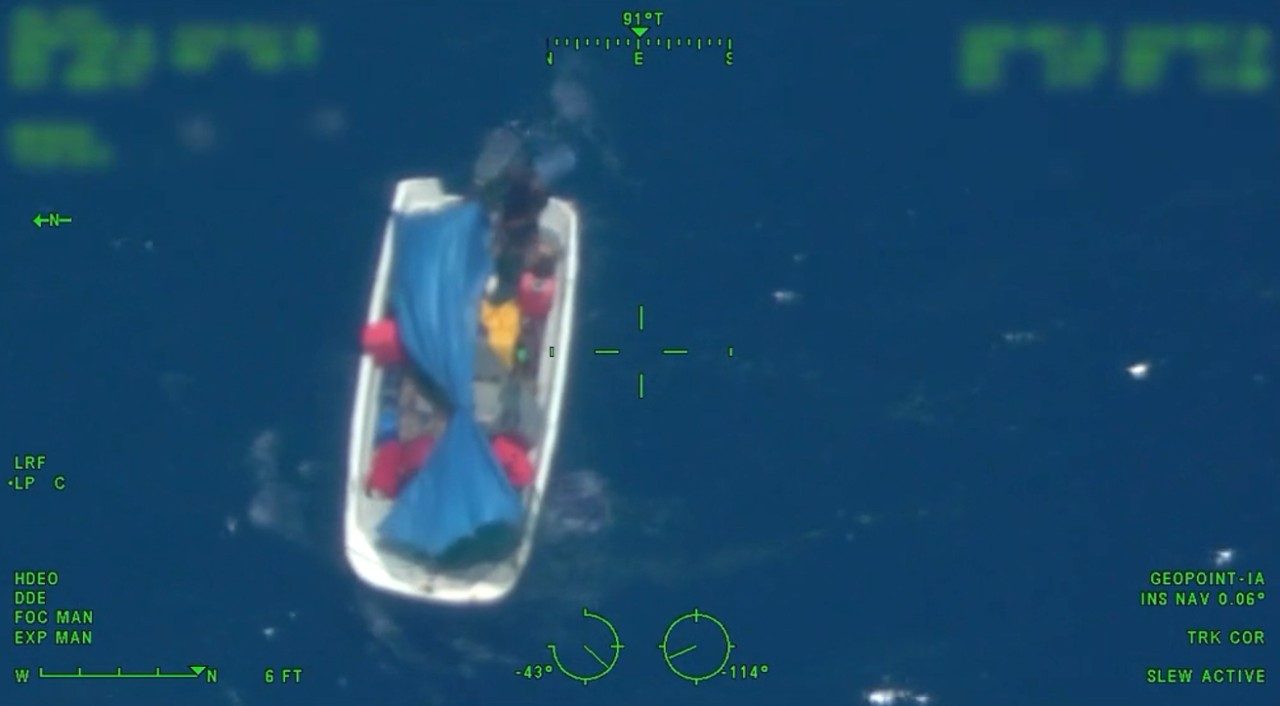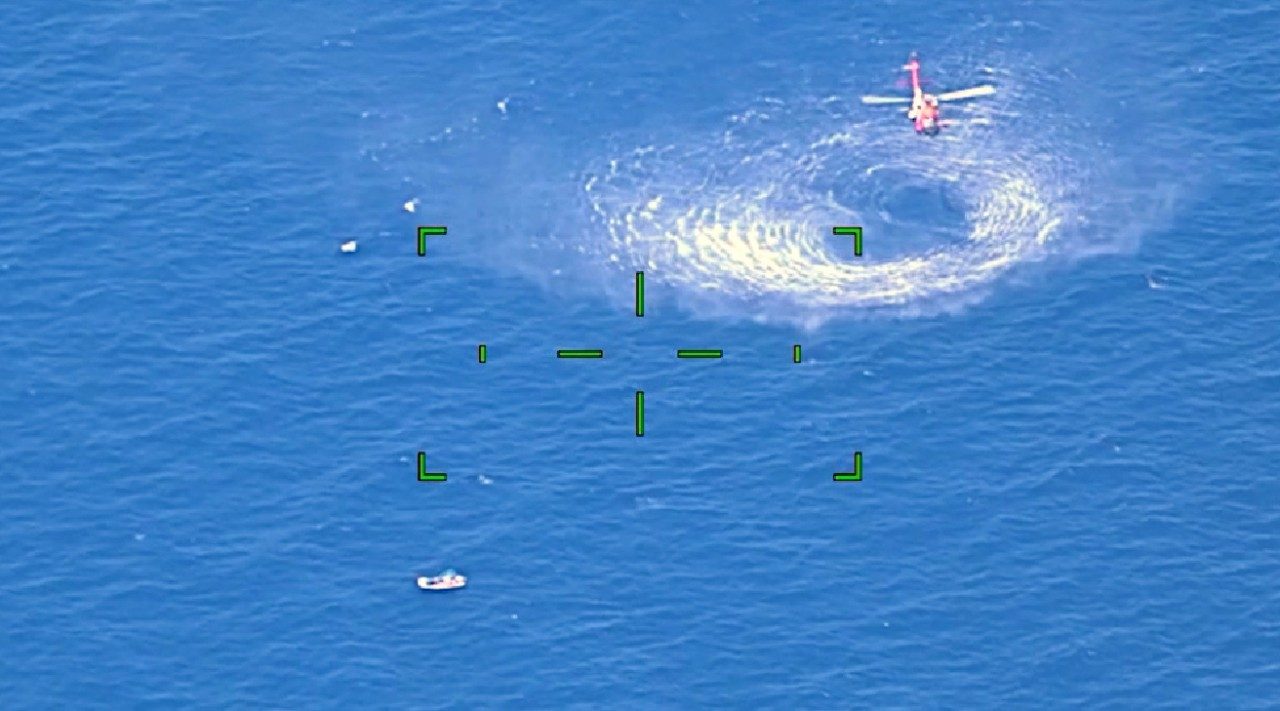No Food, No Water: Coast Guard Aircrews Rescue Boaters After Six Days at Sea
It’s May 20. Two men aboard an 18-foot recreational vessel are adrift off the coast of Acklins Island, Bahamas. After six days without food or water, they’ve grown lethargic. The vessel is now disabled and reported overdue by the Royal Bahamas Defense Force.
As an MH-60T Jayhawk helicopter from Coast Guard Air Station Clearwater, Florida, flies over the Caribbean Sea, the pilot in command, Lt. Scott Kellerman receives word of the stranded boaters.
For Lt. Kellerman, rescue operations like this are nothing new. After serving as a pilot in the U.S. Navy for nine years, he joined the Coast Guard in 2016. Today, Lt. Kellerman has achieved over 2,200 MH-60T flight hours and has close to 100 search and rescue cases under his belt.
As the situation escalates, the Jayhawk crew is tasked with assisting a fixed-wing aircraft from Coast Guard Air Station Miami in the rescue.
Arriving at the location of the white vessel, 55 miles from land, the crew encounters four-foot seas with white caps. An overcast sky at 5,500 feet makes initial visibility conditions less than ideal for a rescue. Worse still, the boaters are unable to be reached through radio communications.

One of the two Bahamian men stranded aboard the disabled vessel waves an object to capture the attention of U.S. Coast Guard aircrews above. (Photo courtesy U.S. Coast Guard District 7).
“The hardest part for us was getting on scene without any comms. We had to decide as a crew to move forward with putting our rescue swimmer down to evaluate the situation without being able to talk to the people onboard,” said Lt. Sam Lowe, MH-60T Pilot. “Going into the unknown of that was one of the more challenging parts.”
To prevent rotor wash from being thrown down on the vessel, the rescue swimmer jumps from the helicopter into the water, well outside where the disabled vessel could be harmed.
The rescue swimmer confirms the dehydrated condition of the men before they’re safely hoisted up to the helicopter and evaluated onboard. The Jayhawk is outfitted with medical equipment and supplies so the crew can perform in-flight emergency aid.
“There’s over an hour transit just to get back to the higher level of care,” said Lt. Kellerman. “One thing we did consider when we stopped to get gas on nearby Great Inagua island was making sure we had what we needed in terms of electrolytes, liquid IVs, a meal ready to eat that we keep in the aircraft, and water.”
Despite initial challenges, the Jayhawk crew transports the two men to Spring Port Airport in the Bahamas, where they report no medical concerns.
For this Clearwater crew, it doesn’t stop there. Just 17 hours later, they successfully rescue six more individuals from life rafts after their sailing vessel sank.

The MH-60T Jayhawk hovers near the disabled vessel on May 20 to release the rescue swimmer into the water and hoist the boaters to safety. (Photo courtesy U.S. Coast Guard District 7).
A Boating Safety Reminder That Could Save Your Life
Built to Support the Mission
During their rescue missions, the Clearwater crew was supported by the reliability of the Sikorsky MH-60T Jayhawk.
The long-range capability of 700 nautical miles and endurance of 6.5 hours enabled the crew to focus on the search and rescue at hand. Its systems and altitude hold functionality allowed them to maintain a stable hover while the rescue swimmer prepared to hoist the two men using a rescue basket.
“A lot of times, especially in that region, you’re traveling anywhere upwards of a couple hundred miles to arrive on scene to then go do a case and come back,” said Lt. Kellerman. “Just having that extra bit of fuel in the tank ready to go should something change, or the conditions worsen, that fuel endurance is always a super helpful thing.”
Learn more about the sailors and aircrews who perform these missions and the advanced capabilities of the MH-60T Jayhawk that help make it possible.




